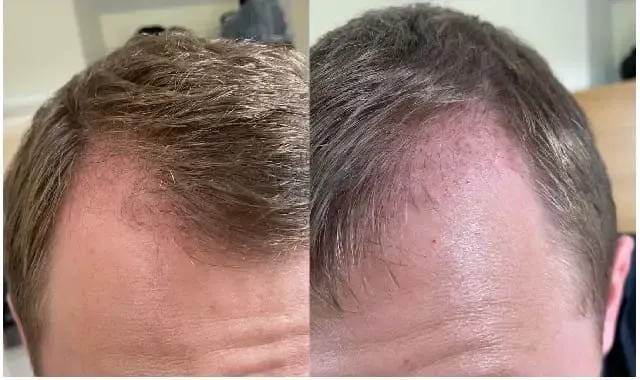Insights into Post Hair Transplant Appearance
Gaining a realistic expectation of your hair's appearance post hair transplant surgery is essential. While each individual's hair outcome is unique and cannot be precisely predicted, acquainting yourself with certain facts can provide you with a general understanding of the potential outcome.

|
| Insights into Post Hair Transplant Appearance |
1. Hair Graft Composition: The number of hairs per graft utilized in your hair transplant significantly impacts the naturalness of the result. While some practitioners employ grafts containing up to eight hairs, opting for smaller grafts housing one to four hair follicles yields a more natural appearance. These follicular unit grafts are particularly effective in restoring receding hairlines, creating a seamless look compared to larger grafts that can be conspicuous.
2. Donor Site Density: The density of hair follicles in your donor sites influences the fullness of your transplanted hair. A higher density equates to more follicles available for transplantation, resulting in a fuller appearance in the transplant area.
3. Scalp Laxity: The flexibility of your scalp, known as scalp laxity, plays a role akin to hair density in determining the number of grafts feasible. Adequate scalp laxity allows for increased graft insertion, contributing to a more substantial hair transplant outcome.
4. Hair Texture Matters: Coarse hair provides better coverage, allowing surgeons to use fewer follicles per graft during transplantation. Finer hair, while more natural-looking when thin, might require more grafts to achieve the desired coverage.
5. Straight vs. Curly Hair: Hair texture affects coverage. Straight hair might pose a challenge for transplant surgeons, as it doesn't provide the same coverage as curly hair, which stands up from the scalp, creating a denser appearance.
6. Hair and Skin Color Relationship: The contrast between your hair and skin color influences the visibility of your hair transplant. Similar hair and skin colors help conceal any gaps in coverage. Conversely, distinct contrasts highlight any deficiency in coverage. For instance, someone with fair skin and jet-black hair will showcase noticeable follicles.
Ultimately, the outcome of hair transplant surgery remains uncertain until results are visible. Skilled surgeons can address these variables effectively. However, familiarizing yourself with these possibilities empowers you to ask pertinent questions and make informed decisions.
